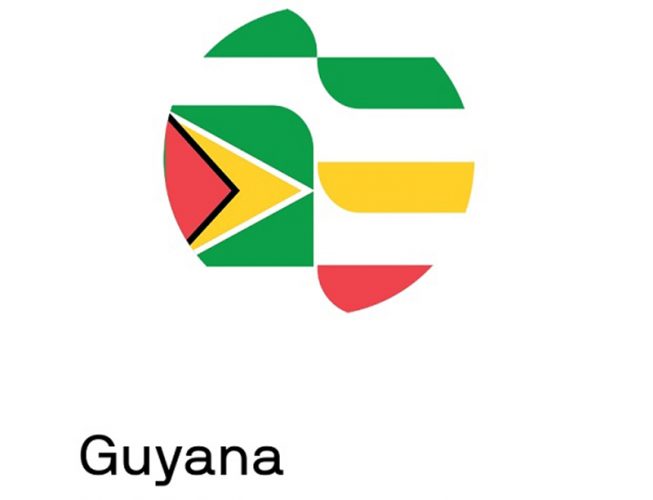
At its core, MMA is an incorporation of several fighting disciplines that are impeccably combined to perfection and is regarded by its many proponents as the most complete unarmed combat discipline. Amongst these fighting disciplines are the grappling arts which include judo, sambo, Greco-Roman wrestling, and jiu-jitsu, and the striking arts such as tae kwon do, boxing, karate, Muay Thai, and its derivative, kickboxing. It is indeed a conglomerate of styles.
The modern incarnation that birthed the eventual mainstream phenomenon, was Brazil’s ‘Vale Tudo’, which is an unarmed, full-contact combat sport with relatively few rules, that emanated intentionally or otherwise, out of the nation’s adaptation and alteration of traditional Japanese jiu-jitsu. It was essentially the grandfather of MMA.

One cannot speak of MMA without invoking the Gracie family, creators of the highly-regarded Brazilian Jiu-Jitsu which laid the bedrock for the discipline, and who are considered to be MMA royalty. And to put not too fine a point on it, the first MMA championship was won by Royce Gracie, son of the patriarch, grandmaster Helio Gracie.
The allure of the sport is unquestionable especially to the viewing public, who flock to venues and buy Pay-Per-View subscriptions to see the best compete for a solitary title in each division… a far cry from boxing and its multiple divisional champions. Simply put, there are no calculated delays and no protracted parleys. MMA essentially gives its fandom what they desire – the best competing against each other on a consistent basis.
This is further indicative and evident in competitors failing to maintain unbeaten records in a sport where glorious uncertainty not only exists but is an inherent facet of its actuality. This is indicative of the strategic nature of the sport, and the adaptability of its combatants, who are versed in multiple arts.
Case in point, one-time MMA female superstar, 2008 Olympic Judo bronze medallist Ronda Rousey, who recorded nine of her 12 wins via submission, and looked unstoppable, eventually suffered consecutive losses in her 14- match career at the hands of boxing and Muay Thai specialists. The lesson… no one fighting style or discipline can reign supreme.
And while one must concede the barbaric nature of the sport in its preliminary iteration, the natural advancement of skill, and athleticism coupled with burgeoning popularity, as a viable alternative to the sweet science of boxing, has transported the sport into the realm of mainstream significance, essentially shedding its initial no-holds-barred uncivilised image.
Such has been the success story of a discipline whose humble commercial beginnings occurred in 1993 in Denver, Colorado, USA, that it is the fastest-growing spectator sport in the world.
At the forefront of this professional movement, is the UFC (Ultimate Fighting Championship), although smaller promotional entities such as One Championship of Asia, California-based Bellator MMA, and solitary women’s fighting championship, Invicta, continue to play an invaluable role in changing the perception of a sizable percentile of a timid and unfamiliar public.
The UFC in particular paved the way for normalisation by incorporating weight classes (nine to be exact), time limits, rounds, infractions and subsequently commercial incentives; a plethora of adjustments which made the sport safer, and more lucrative. The evidence is in its current reality.
Initial brawlers have been replaced by highly skilled practitioners, whilst regulatory bodies have been commissioned, and in some cases, expanded to incorporate the discipline, to ensure compliance at every level, which further adds to the legitimacy and welfare of the flourishing sport. This structured approach has allowed the pioneer and industry leader, the UFC, which was founded in 1993, and is viewed presently in 130 countries via Pay-Per-View, to be worth more than US$8 billion. This is an entity which was bought for US$2 million in 2002 and was subsequently sold to talent agency WME-IMG for a whopping US$4 billion in 2016!
In 2022 alone, the promotion in the first quarter reportedly generated US$1 billion. This was against the backdrop of also generating US$1 billion during the pandemic of 2021. Bellator and One Championship, though smaller, have also shown similar trends of financial prosperity. Who says MMA isn’t financially lucrative and a viable and safer alternative to boxing?
In the amateur realm, the International Mixed Martial Arts Federation (IMMAF), which was established in 2012 following support from the UFC, serves as the global authority and developmental arm of the discipline for the foreseeable future in both the men’s and women’s divisions. In excess of 40 nations are affiliated with the entity which annually conducts a World Championship for the amateur ranks. The primary objective of the IMMAF is to secure the inclusion of MMA at the Summer Olympics.
On the local front, the Guyana Mixed Martial Arts Federation (GMMAF) under the leadership of Gavin Singh, shares the unenviable task, or in some quarters, the objectionable assignment, of charting a developmental course for a discipline that is celebrated by its southern neighbour, Brazil, but is reproached in the Caribbean, of which intrinsic cultural connections are shared.
The association has done a commendable job in acquiring local relevance following participation at the IMMAF World Championship, and by implementing policies that cater to and spur club development, as well as, and more importantly, forming partnerships with the disciplined services of the Guyana Defence Force and Guyana Police Force, who are uniquely geared to utilise the sport as part of their close quarter combat training protocols.
To make it more emphatic, the subsequent popularity of the discipline coupled with the larger-than-life personalities of several of its notable champions has further consolidated MMA’s global appeal and mainstream existence. Superstars such as Conor McGregor, and Rousey to name a few, have transcended the sport, and have become household names in all aspects of entertainment.
Interestingly, Guyana’s most popular combat sports professional actually emanates from MMA in the form of UFC alumni Carlston Harris. As such, the possibilities that exist, and that can be realised and acquired via this flourishing enterprise should be acknowledged and not understated. Locally, combat sports have as often faced an indifferent experience. MMA is just the newest addition to that list.
Boxing has a long history stretching back to colonial times, and MMA by comparison, seems quite savage and uncivilised. After all, it is not uncommon, one must concede, to witness combatants with quite bloody faces. This at first glance may suggest some barbarism, something that the region, quite conservative in its outlook, may have difficulty embracing.
Interestingly however, optics aside, MMA is safer than its apparent ‘cultured cousin’ boxing. According to a notable study by researchers from the University of Alberta’s Sather Sports Medicine Clinic, boxers are more likely to incur injuries that will affect their long-term health in comparison to MMA fighters, who are more at risk of suffering lacerations and contusions. The information was compiled over the period of 10 years, 2003-2013, and analysed medical post-fight data from 1,182 MMA combatants and 550 boxers. It was revealed that 59.4% of MMA fighters sustained some form of injury in comparison to 49.8% of boxers.
Delving deeper, the research illustrated that 7.1% of the 550 boxers analysed, were knocked out, lost consciousness or suffered serious eye injuries. In comparison, only 4.2% of 1,182 MMA combatants incurred the aforesaid injuries. The research data also highlighted that boxers were more likely to be medically suspended due to concussions.
Even mortality in the squared circle dwarfs that of the octagon, though the correlation, according to the study, centres on the age of the sport (more than 130 years in the case of boxing as compared to 30 years for MMA), the lack of initial safety regulations, and the age of boxers, who tend to compete far longer in their careers than MMA combatants. Also, the concentrated nature of boxing and the emphasis on strikes to the head also is cited as a reason for possible fatalities and serious long-term injuries.
This is further evident by a 2006 study, titled ‘Incident of Injury in Professional MMA Competitions’ by Dr Gregory Bledsoe of John Hopkins University. The relevant literature summarized and stated that 6.4% of MMA contests concluded in a knockout in comparison to 11.6% for boxing.
The study further concluded that MMA is a safer sport because it did not emphasise or place a premium on knockouts compared to boxing, as matches in the former could be concluded by other methods inclusive of submissions, given its all-around nature. This is against the backdrop of MMA financially rewarding combatants for knockout stoppages.
The age-old adage ‘Perception is 9/10s of reality’ certainly comes to mind. However, fidelity to the facts is non-negotiable. MMA is much safer than it’s perceived.




